How to close a Google Form manually
- Open the Google Form
- Click the Responses tab
- Toggle the Accepting Responses button
Interactive step-by-step tutorial
You send out forms hoping to collect responses, but what happens once you’ve reached your deadline or have enough responses and need to cut them off? Leaving a form open leads to a lot of extra work. You may need to remove the form from wherever it’s posted, inform those who haven’t responded yet, and even reach out directly to those who responded after the cutoff.
If you use Google Forms, it’s important you know how to close your forms so you can avoid this unnecessary hassle. Closing a form ensures a clean cutoff that protects your data’s integrity and saves you from having to amend or discard submissions that come in late. Whether you do it manually or automatically, closing forms gives you more accurate results.
In this post, you’ll learn how you can benefit from closing forms, how to close a Google Form, and how alternatives like Jotform can be even more effective than Google Forms.

Looking for the best alternative to Google Forms?
Jotform’s full-featured form-building solution is mobile-friendly and has the most integrations in the industry. Use it to collect payments, automate workflows, gather leads, and more.
What it means to close a form
Closing a form (or disabling a form, as it’s sometimes known) means you’ll no longer accept responses. This can save you from a great deal of trouble — like overbooked events and angry customers. Rather than having to delete the form completely, when you close a form, it will no longer accept responses and will alert anyone who tries to fill it out that it is closed to submissions.
When to close a form and why you should
When a form is closed, even those who have a private link to it can no longer fill it out. This is especially useful when you’ve sent a form to a large number of people at once. Even if you send an email asking those recipients not to respond to the form anymore, people don’t always read emails immediately, and some of your recipients could fill out your form even after you’ve received all the responses you need.
In some situations, it’s important to close your form at exactly the right time, like when it relates to a certain date or number of responses. For example, a signup form for an upcoming event with a limited number of seats will need to close depending on both time and availability. Overbooking this event or receiving late registrations will frustrate both you and your respondents.
You can close forms manually or automatically. How you choose to close the form will depend on what your needs are, how much time you have, and how much effort you want to put into monitoring it.
How to close a Google Form manually
Closing a Google Form manually is inconvenient and usually requires you to monitor responses closely. Even then, any responses that come in while you’re closing the form will affect your overall results. To close a Google Form manually, follow these simple steps:
- Open the Google Form.
- Click the Responses tab at the top of the form editor.
- Toggle the Accepting Responses button to off.
If you ever want to reopen the form, simply switch the button back on. While this sounds simple, the extra work required to close your form at exactly the right time makes this the least effective option for getting timely, accurate results.
How to close a Google Form automatically
The best way to guarantee a clean cutoff for your form’s responses is to automate your form. Many form tools feature the option to close automatically on a specific date or at a specific number of responses. That way, you know you’ll get the exact number of responses you need without having to constantly monitor them.
However, Google Forms doesn’t allow you to automatically close forms, so you’ll need to download the add-on formLimiter. This add-on is useful for automation, but it may take a while for you to navigate it and set it up.
The formLimiter add-on automatically closes a form based on either the number of submissions or the date and time. However, it doesn’t allow you to close a form using more than one factor.
Before setting up formLimiter automations, first download the add-on. Then, follow these steps to get started:
- Open your Google Form and click on the three dots in the top right corner.
- Select Get add-ons to go to the Google Workplace Marketplace.
- If it doesn’t appear on the homepage, search for formLimiter and select it.
Create forms seamlessly in Google Workspace with Form Builder by Jotform. Discover more now!
- Install formLimiter and allow all permissions.
- Access formLimiter through the puzzle piece icon at the top of your form.
- Click on Set limit to open the menu where you can configure your form’s automations.
Once you’ve done that, you can access formLimiter in any of your forms to get started.
Closing a form on a specific date
If you need responses to your Google Form by a certain date or time, create limits based on time in formLimiter. Once you have formLimiter open, setup takes just a few steps:
- Click Set limit to open the limits menu.
- Select date and time from the Limit Type menu.
- Enter the cutoff date and time in the available text boxes or select options using the calendar widgets.
- Set the message you’d like to display when submissions are closed.
- Click Save and Enable to finalize your automation.
If the add-on works properly, your form will close automatically on the date and time you’ve selected. Add-ons are occasionally unreliable, so be sure to keep an eye out for any potential problems. You can also set it up so you get an email notification once your form closes.
Closing a form with submission limits
When sending out order forms for your next big product, you need to be sure you don’t oversell. This requires a precise shutoff for orders, and you can only take care of this through automation. To set your form up to close automatically after you’ve received a certain number of submissions, follow these steps:
- Click Set limit to open the limits menu.
- Select Number of form responses from the Limit Type menu.
- Enter the maximum number of form submissions your form should have.
- Set the message you’d like to display when submissions are closed.
- Click Save and Enable to finalize your automation.
The disadvantages of using Google Forms when you want to close it
Although Google Forms is one of the most commonly used form builders, it has its cons. The ability to close a Google Form automatically isn’t a built-in feature. Closing a form on a specific date or submission limit requires additional tools and complicated setups. When you need to set a form to close automatically and reliably, you may want to consider an alternative. Jotform has just the solution for that.
Close forms and gather data with Jotform
Although Google Forms is one of the most commonly used form builders, it has its disadvantages. Closing a Google Form automatically can be tedious, and the process can be difficult to remember. Setting up automatic submissions requires additional downloads and overly complicated setups.
When you need to get a form set up quickly and reliably, you may want to consider an alternative like Jotform.
Jotform delivers a lot of features that simpler programs like Google Forms don’t, such as
- 100-plus third-party integrations
- More than 10,000 free form templates
- Reusable forms that you can send to anyone
- Drag-and-drop customization options
- E-signature collection through Jotform Sign
With Jotform, you can manually close forms in as few as four steps, or you can automate your form’s closing. Jotform forms also integrate with Jotform Tables to automatically store your responses, so you can gather and organize your data without any extra effort.
How to close a Jotform manually
When you need to close your form as quickly as possible, you can do it with Jotform using two different methods. Both are faster than the method for Google Forms, and you can reverse them at any time. Check out how to manually close a Jotform form below:
My Forms
- On the My Forms page, select the form you’d like to close or open.
- Click the More dropdown menu.
- Click either Disable or Enable to close or open that form.
Form Settings
- In the Form Builder, click into the Settings tab at the top.
- Set the Form Status to disabled to close the form or enabled to open it.
Each method is quick, easy, and reversible, so you don’t have to worry about being able to use your form again in the future.
How to close a Jotform form automatically
With Jotform, you can automatically close or disable any forms according to one or more criteria. You can have them close based on the number of submissions you’ve received, the date, or even both simultaneously. (This contrasts with Google Forms, which doesn’t allow you to set both submissions and time limits, even with the formLimiter add-on).
Let’s take a look at the different ways you can close your Jotform form automatically. You can access each of these options through the Form Status option in the Form Builder’s Settings tab.
Close on a specific date
When you need to close your Jotform on a specific date and time, this is the option for you. It’s important to note that these settings are in Eastern Standard Time (EST) and are on a 24-hour clock, so there are no a.m. or p.m. options. You also have to set expiration times at least five hours before the expiration time itself.
- In Form Settings, select Disable on specific date.
- Set your expiration date using the calendar widget.
- Enter the expiration time in the box to the right.
Close by a submission limit
For forms that shouldn’t receive more responses than you have space or inventory available for — like event signup forms or order forms — Jotform can set submission limits. Be sure to enter the exact number of submissions you want. Once a form reaches its limit, it will disable automatically, so you don’t have to awkwardly contact anyone who submits the form after the limit has been reached.
Here’s how to set it up:
- In Form Settings, select Disable on submission limit.
- Enter your exact submission limit in the corresponding text box and save.
Close a form on a specific date or submission limit
Sometimes forms require multiple closing factors. For example, a product that has an order deadline and a limited number available will require a form that can close based on both number of submissions and date. Luckily, Jotform can do what Google Forms can’t.
Here’s how to automatically close a form by date and submission number:
- Select Disable on date and submission limit in Form Settings.
- Set your expiration date in the calendar widget.
- Select Expiration Time in the box to the right.
- Enter your exact Submission Limit in the corresponding text box.
When your form hits either of these two limits, it will close automatically. Need it to open again? You can reopen an automatically closed form by setting it to Enabled in Form Settings, or by changing the date and form submission limit. You can adjust one or both of the limits, depending on what works best for you.
If you change the submission limit, you’ll want to add your original limit to however many more responses you need. For example, if your original limit was 250 and you want to add 100 submissions, you should enter 350 as the new submission limit.
Never worry about leaving a form open again
Now that you’ve learned how to close a Google Form and why it’s so valuable, you can close your forms with confidence. Consider using Jotform to eliminate the guesswork. With automated options and advanced integrations at your fingertips, you can get more accurate results with less work.
Photo by Gaelle Marcel on Unsplash






































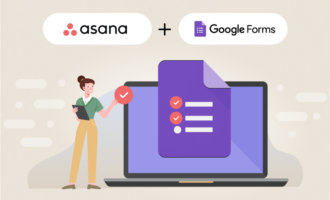




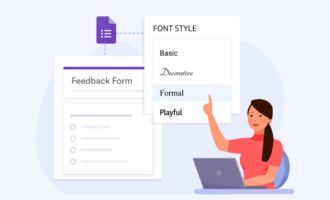




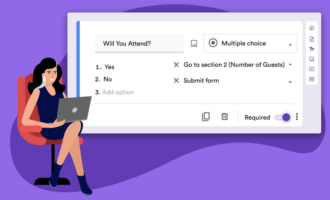

















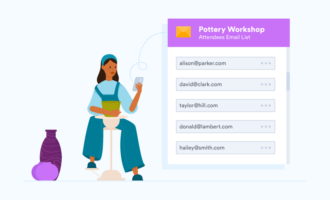

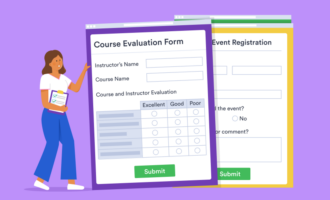














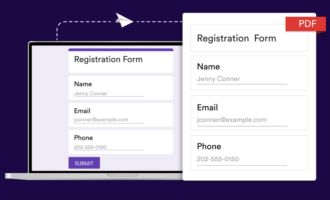








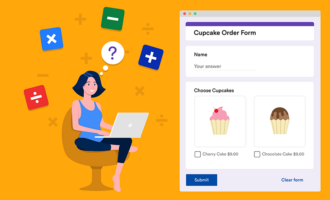








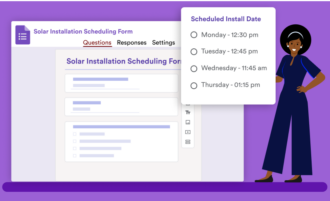
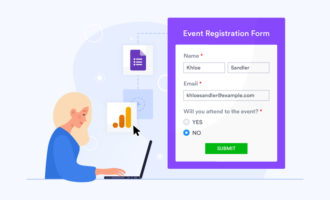



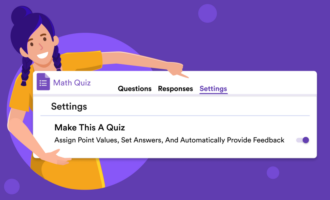



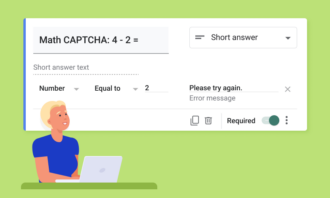



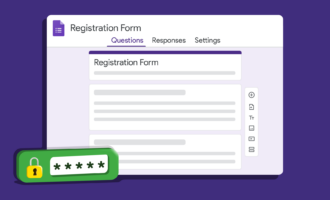

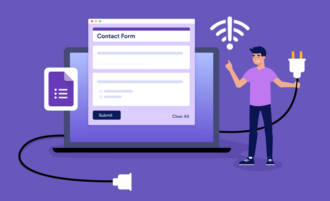
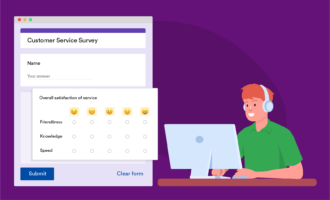






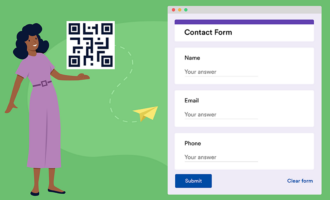

Send Comment:
1 Comments:
More than a year ago
I have used Email Notifications for Google Forms for quite some time to both set open dates for forms and set a maximum response number. I am creating my forms for February and that extension does not show those options now. Has Google changed that extension? formLimiter does not allow me to add both and that's what I need. Are you aware of another Google extension I can use? Thanks!